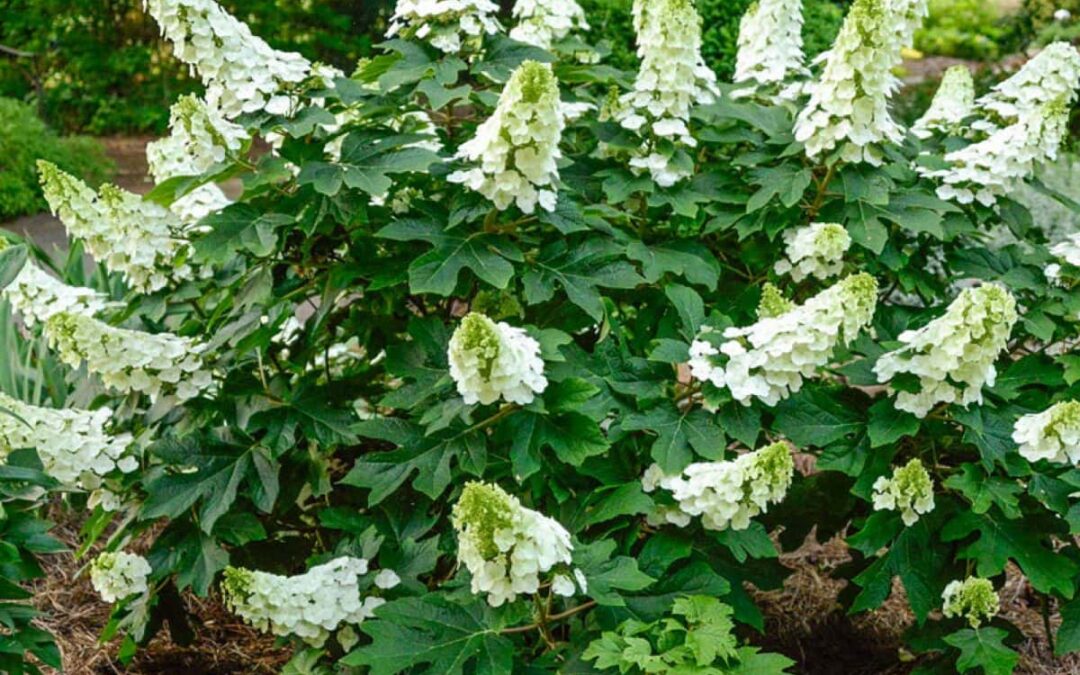
by | | Gardening, Horticulture, National Garden Week, Plants
Ahhh!!! Spring and early summer! The time of year that stirs our mind, spirit and body into venturing outdoors and communing with nature. So you rise up, arm yourself with tools and head out to tackle the weeds, pruning and edging. After all of the ‘grunt’ work is done you head to the stores to buy your beloved summer plants. Buying plants that have been pampered in greenhouses to look their very best to entice you to buy them. At home, you follow all the rules for Southern gardening: Till the clay. Amend your soil with sand and peat moss. Mix in some all-purpose fertilizer. Plant your summer selections and water. Then the heat comes and quite possibly a drought. Or perhaps too much rain. In no time at all those lovely summer plants are not well or worse — not even alive! There is an alternative. All one has to do is look back into the history of southern gardening. The answer is southern heirloom plants. Heirloom plants are those plants that were most commonly cultivated in southern gardens many generations ago. They are still around today because they are fool proof. They have survived countless summers of heat, drought, poor soil and in many cases great neglect. Many heirloom plants provide great color and fragrance, too. With just a little research on your part you can make a better investment in your landscape and save yourself some work in the process. Heirlooms are generally low-maintenance and disease-resistant. They would have to be to survive throughout the ages!
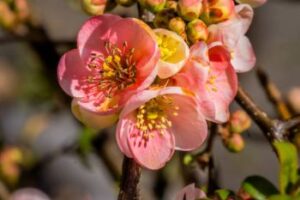 Just keep in mind the following plant categories when planning your heirloom garden: Ephemerals are those plants that will literally disappear into the ground by fall or early winter, The placement of these plants or bulbs will need to be marked so you can remember where they are. Deciduous plants will remain visible in your garden throughout the year but will lose their foliage in the winter.
Just keep in mind the following plant categories when planning your heirloom garden: Ephemerals are those plants that will literally disappear into the ground by fall or early winter, The placement of these plants or bulbs will need to be marked so you can remember where they are. Deciduous plants will remain visible in your garden throughout the year but will lose their foliage in the winter.
Roswell Garden Club has researched local historic plants. and here are some examples of heirloom plants that have lived and thrived in Roswell for more than 150 years. In the Ephemeral category there arc Lilies of the Valley, Star of Bethlehem, Spanish Blue Bells, Grape Hyacinth, Tiger Lilies, Iris, Blackberry Lilies. Jonquils and Violets. Deciduous specimens include Bridal Wreath, Mock Orange, Oakleaf Hydrangea, Dogwood, Flowering Quince, Wisteria, and Flowering Almond. Evergreen plants providing an all-season interest in the garden are Southern Magnolia, Spanish Bayonet (Yucca), Gardenia, Camellia, Mahonia and Boxwood.
These plants have all been identified as being on historic properties in Roswell. Many are available at local specialty nurseries or through area plant societies. Many of these clubs having plant sales in the spring and fall, along with garden tours this time of year which is an excellent source for purchasing these varieties. At these events you can ask the experts about the plant to confirm its exact growing conditions and eventual size. Best of all-they were most likely propagated from local heirloom plants so they come from very good, reliable stock!
If you would like to see many of these plants in action, treat yourself to tours of the various historic homes in Roswell that are open to the public. All have period gardens and plants for you to inspect and enjoy.
For those of you hungry for more knowledge-join a garden club. The Roswell Garden Club meets monthly from September to May and is involved in many community garden projects. As members participate and work on these projects, they learn many aspects of Southern gardening and can apply this knowledge to their own gardens. Plus it’s great fun to network with other garden enthusiasts. In the meantime, start incorporating heirloom plants in your garden. While you’re saving time, energy and money, you will be creating your own legends.
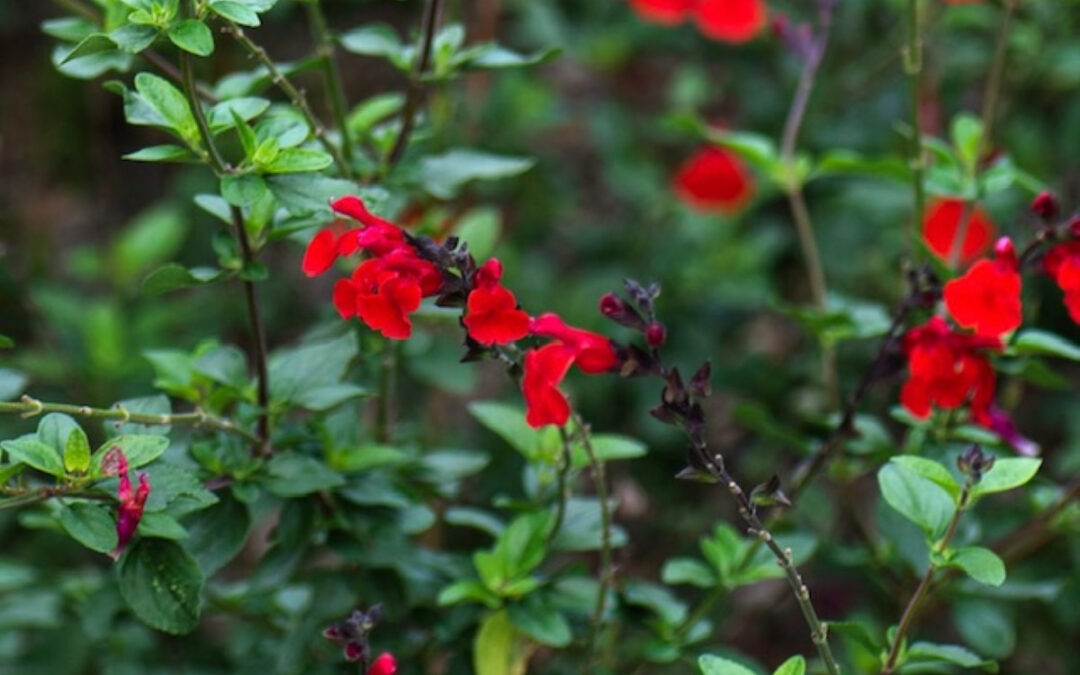
by | | Gardening, Horticulture, National Garden Week, Plants
Autumn Sage is a perennial plant native to North America – specifically native to Texas Hill Country and Mexico. It is named for Josiah Gregg, a naturalist who found it as he traveled throughout the Southwestern United States and Mexico.
It is a sub-shrub that blooms from March – November on previous or current year’s growth, attracting pollinators. It is specifically known as a magnet for Hummingbirds. It thrives in rocky soils but does well in dry to medium well-drained soils. When first planted, water 2 times a week until it is established but then it does well on its own. If it gets to be terribly hot for too many days with no rain at all, I will sometimes water it, but it seems to thrive even when neglected – perhaps that is why I love this plant so much.
In addition to being draught tolerant, Salvia Greggii does not have many diseases to worry about, and it is highly deer resistant, although I personally believe hungry deer will eat anything.
Autumn Sage does best in full sun but can do well in part-sun. It will live and grow in a shadier area but will not bloom as profusely. This plant can get to be 3 ft. by 3 ft. tall. If you cut it back (no more than 1/3) in August, it encourages more blooms. In February, it can be cut back by ½ to keep it from getting spindly or woody looking. Some gardeners do not mind the spindly more rambling look as it still blooms beautifully so just decide what is right for your garden.
I have the red Autumn Sage and love it, but it also comes in pink, purple, and white. The plant is deciduous in colder climates but often evergreen in warmer climates. I have found it to be both in my yard. If it snows on it or it gets frozen, it may get woody looking, but by springtime or earlier it bounces back full of blooms. If the climate is mild throughout the winter, it remains evergreen.
If you are looking for an easy to grow, low maintenance, drought tolerant plant with beautiful blooms that also attracts pollinators, please consider Autumn Sage (Salvia Greggii).
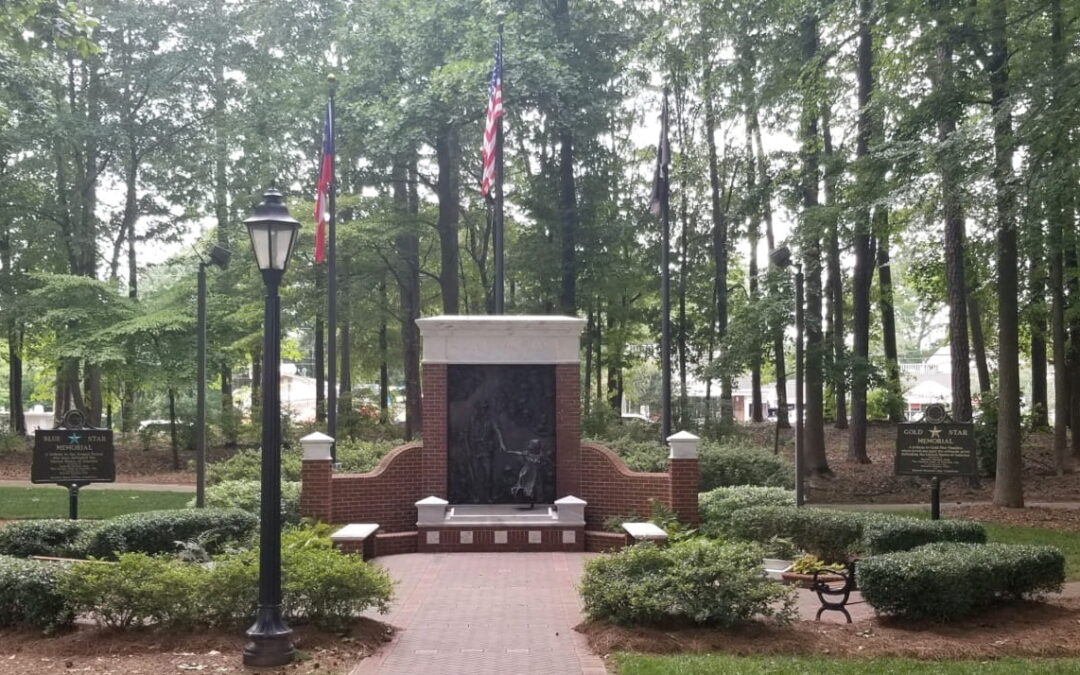
by | | Inspiration, National Garden Week
Roswell Garden Club invites you to join us on Memorial Day, 2022, for our Blue Star Memorial Marker and Gold Star Families Memorial Marker Dedication at the 23rd annual Roswell Remembers Memorial Day Ceremony. The markers honor those who have served or will serve in the US Armed Forces (Blue Star) and those who have lost a family member in service to the United States (Gold Star Families). The event starts at 11:00 am at Roswell’s City Hall.
History of the Blue Star & Gold Star Families Memorial Markers
The Blue Star Memorial Program honors service men and women who have served, are serving or will be serving in the United States Armed Services. The program was established by the New Jersey Council of Garden Clubs in 1944. In 1945, the National Council of State Garden Clubs (now National Garden Clubs, Inc.) adopted the program and began a Blue Star Highway system, which covers thousands of miles across the Continental United States, Alaska and Hawaii. Blue Star Memorial Highway Markers are placed at appropriate locations along the system. Memorial Markers and By-Way Markers are placed at locations such as national cemeteries, parks, veteran’s facilities and gardens.
The Blue Star became an icon in World War II and was seen on service flags and banners in homes for sons and daughters away at war as well as in churches and businesses. The Blue Star was replaced by a Gold Star when a service member died while serving in conflicts.
In 2015 the Gold Star Families Marker was incorporated into the National Garden Clubs Memorial Marker Program. The Gold Star Families Marker honors the families of U.S. Armed Forces members who died in battle or in support of certain military activities.
Roswell’s Blue Star Memorial Marker and Gold Star Families Memorial Marker are placed by the Roswell Garden Club, The Garden Club of Georgia, Inc. and the National Garden Clubs, Inc. in cooperation with the Roswell Remembers Committee and Roswell Rotary. The marker placement was approved by the Roswell City Council, after which it was approved by The Garden Club of Georgia, Inc. and the National Garden Clubs, Inc. Roswell Garden Club, Roswell Rotary and the Roswell Remembers Committee were integral in all phases of the project. The markers’ juxtaposition with the Faces of War Memorial brings a special synergy to the three memorials.
We are privileged to honor all who have served, are serving or will be serving with the Blue Star Memorial Marker:
ALL TO SEE
LEST WE FORGET
THOSE WHO HELP TO KEEP US FREE
We are privileged to honor all who have lost family members in the United States Armed Forces.
WE REMEMBER—WE WILL NOT FORGET
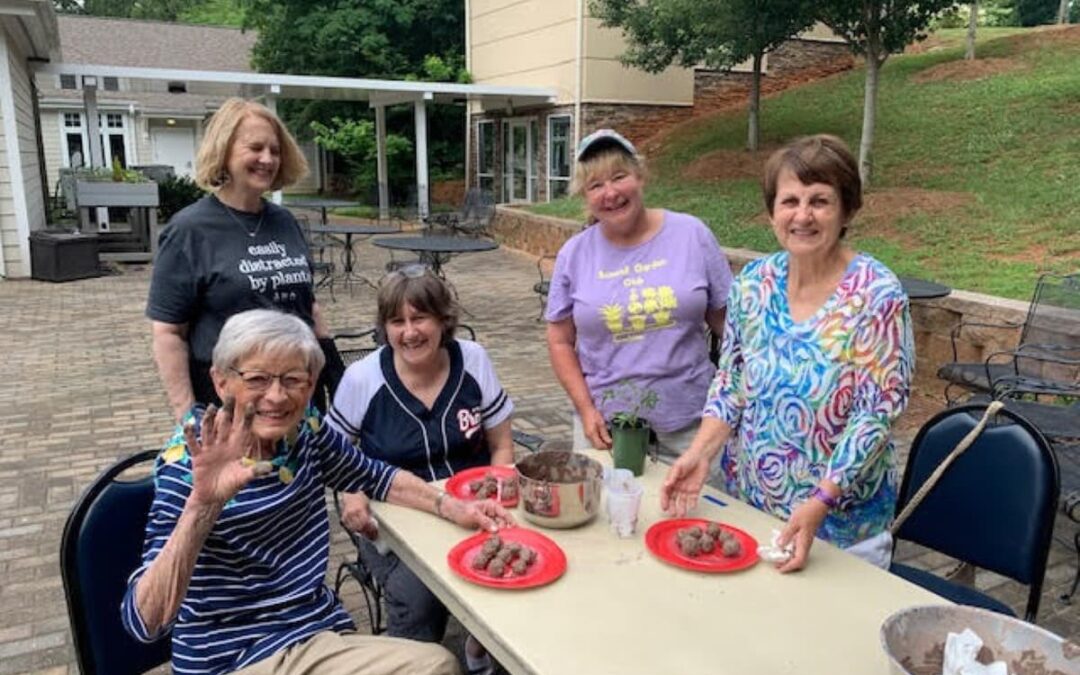
by | | Garden Week In Georgia, Gardening, Inspiration
 JoAnn: We are not always in the garden, our friendship happens all around Roswell. Last week some of us got together at Jeanne’s home and stitched 50 of the cutest “Happy Sacks” to be placed on each meal delivered by Meals on Wheels this spring.
JoAnn: We are not always in the garden, our friendship happens all around Roswell. Last week some of us got together at Jeanne’s home and stitched 50 of the cutest “Happy Sacks” to be placed on each meal delivered by Meals on Wheels this spring.
We had many laughs and caught up on our families. Besides Jeanne and myself, JoAnn, Marcia, Carolyn, Stephanie, Donna, and Dawn helped with Happy Sacks. We missed those who were not able to join us.
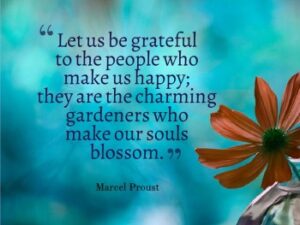 Amy: Proust reminds me of the friendship, camaraderie, and support that exist within a garden club, a group of dedicated people who share the joy and pleasure of taking hard earth and making beautiful things bloom. Image from https://quotlr.com/quotes-about-gardens
Amy: Proust reminds me of the friendship, camaraderie, and support that exist within a garden club, a group of dedicated people who share the joy and pleasure of taking hard earth and making beautiful things bloom. Image from https://quotlr.com/quotes-about-gardens
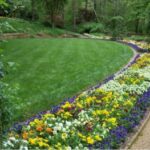 Diane: As a new member of the Roswell Garden Club, I have truly enjoyed getting to know each member. They are such a talented, fun, kind and giving group of women. Our club is, indeed, a garden that has been grown row by row, establishing roots in the community, and allowing each member to bloom. I am thrilled to have a new group of cherished friends!
Diane: As a new member of the Roswell Garden Club, I have truly enjoyed getting to know each member. They are such a talented, fun, kind and giving group of women. Our club is, indeed, a garden that has been grown row by row, establishing roots in the community, and allowing each member to bloom. I am thrilled to have a new group of cherished friends!
Suzy: Our garden club is the embodiment of friendship. When you look at pictures of our garden club activities, you see a beautiful garden of friends. Our friendship includes gardening, decorating, laughing, sewing, traveling, planting, learning, teaching, arranging, sharing, paying tribute, serving, and building community.
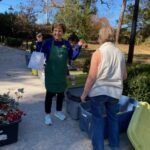
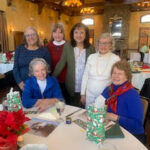
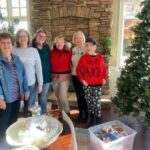
If you can’t join us in the garden that is our friendship, we hope you can find a garden club or garden group near you and become a flower in their garden of friendship.
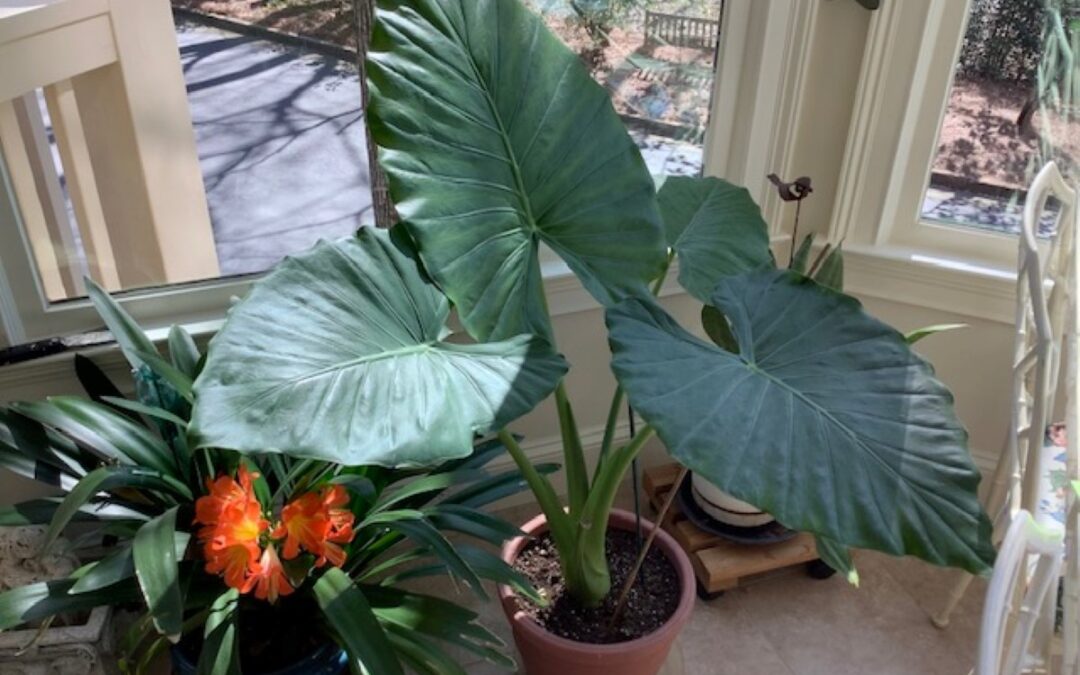
by | | Garden Week In Georgia, Plants
Gretchen: There was a wonderful RGC program about orchids by a friend of Mary Booth Cabot. He had several plants to give away 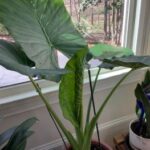 and this Elephant Ear was one. It has grown by leaps and bounds and fascinates me. As you can see, the new leaves emerge from the stem of another recent leaf…and this continues.
and this Elephant Ear was one. It has grown by leaps and bounds and fascinates me. As you can see, the new leaves emerge from the stem of another recent leaf…and this continues.
And, each time I glance at this I think or our beautiful Mary Booth!
King: I get such pleasure from my “Friendship Gardens,” that is, gardens with plants that have been given to me by friends. They help surround my house with resonating memories of precious gardening friends.
Lisa: These lines from “Friendship in the Garden” are most meaningful to me:
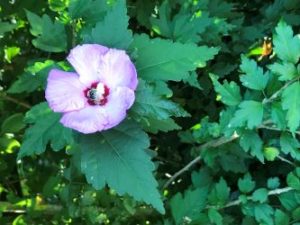
These are ones that should be cherished
In hopes they will remain
To lose them from our gardens would
Engulf our hearts with pain.
When my mom died, visits to her house to clean up and clean out were difficult. I missed her so much. One day on a May visit, I looked out at her yard and saw her spring plants and bulbs popping up. Everywhere I looked, there were “volunteers” and plants ready to be divided. One early morning I decided to go to the house specifically to work in the yard. I dug out and scooped up bishop’s weed, hosta, daylilies, narcissus, red maple, lily of the valley, iris, rose of Sharon, and more.
Some of these plants had come from her own mother’s garden and the gardens of friends and neighbors—a true friendship garden. Before I left town, I shared plants with friends and relatives who were thrilled to receive this perennial reminder of my mom. Each spring, I eagerly look for these transplants in my garden. Seeing them evokes wonderful memories of my mom and her passion for planting and tending her indoor and outdoor plants.
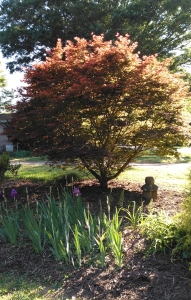 Suzy: My dad grew this Japanese Maple from a seedling under the Japanese Maple tree my siblings & I gave him for Father’s Day when I was in the 6th grade. I think about my dad and my sibs almost every time I look at the tree. The iris under the tree are from my grandmother’s yard. Grandma loved iris. I think about Grandma when I see them, when I smell them on the breeze (they smell like grape jelly!!), and when I divide them and share them with friends.
Suzy: My dad grew this Japanese Maple from a seedling under the Japanese Maple tree my siblings & I gave him for Father’s Day when I was in the 6th grade. I think about my dad and my sibs almost every time I look at the tree. The iris under the tree are from my grandmother’s yard. Grandma loved iris. I think about Grandma when I see them, when I smell them on the breeze (they smell like grape jelly!!), and when I divide them and share them with friends.
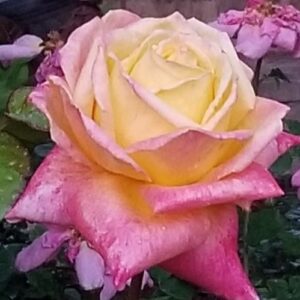 It’s amazing to think about the way the flowers we touch, and our friends touch, do, indeed, touch us back and spread friendship and love in ever-widening circles.
It’s amazing to think about the way the flowers we touch, and our friends touch, do, indeed, touch us back and spread friendship and love in ever-widening circles.

 Just keep in mind the following plant categories when planning your heirloom garden: Ephemerals are those plants that will literally disappear into the ground by fall or early winter, The placement of these plants or bulbs will need to be marked so you can remember where they are. Deciduous plants will remain visible in your garden throughout the year but will lose their foliage in the winter.
Just keep in mind the following plant categories when planning your heirloom garden: Ephemerals are those plants that will literally disappear into the ground by fall or early winter, The placement of these plants or bulbs will need to be marked so you can remember where they are. Deciduous plants will remain visible in your garden throughout the year but will lose their foliage in the winter.



 JoAnn:
JoAnn:  A
A Diane
Diane



 and this Elephant Ear was one. It has grown by leaps and bounds and fascinates me. As you can see, the new leaves emerge from the stem of another recent leaf…and this continues.
and this Elephant Ear was one. It has grown by leaps and bounds and fascinates me. As you can see, the new leaves emerge from the stem of another recent leaf…and this continues.

 It’s amazing to think about the way the flowers we touch, and our friends touch, do, indeed, touch us back and spread friendship and love in ever-widening circles.
It’s amazing to think about the way the flowers we touch, and our friends touch, do, indeed, touch us back and spread friendship and love in ever-widening circles.